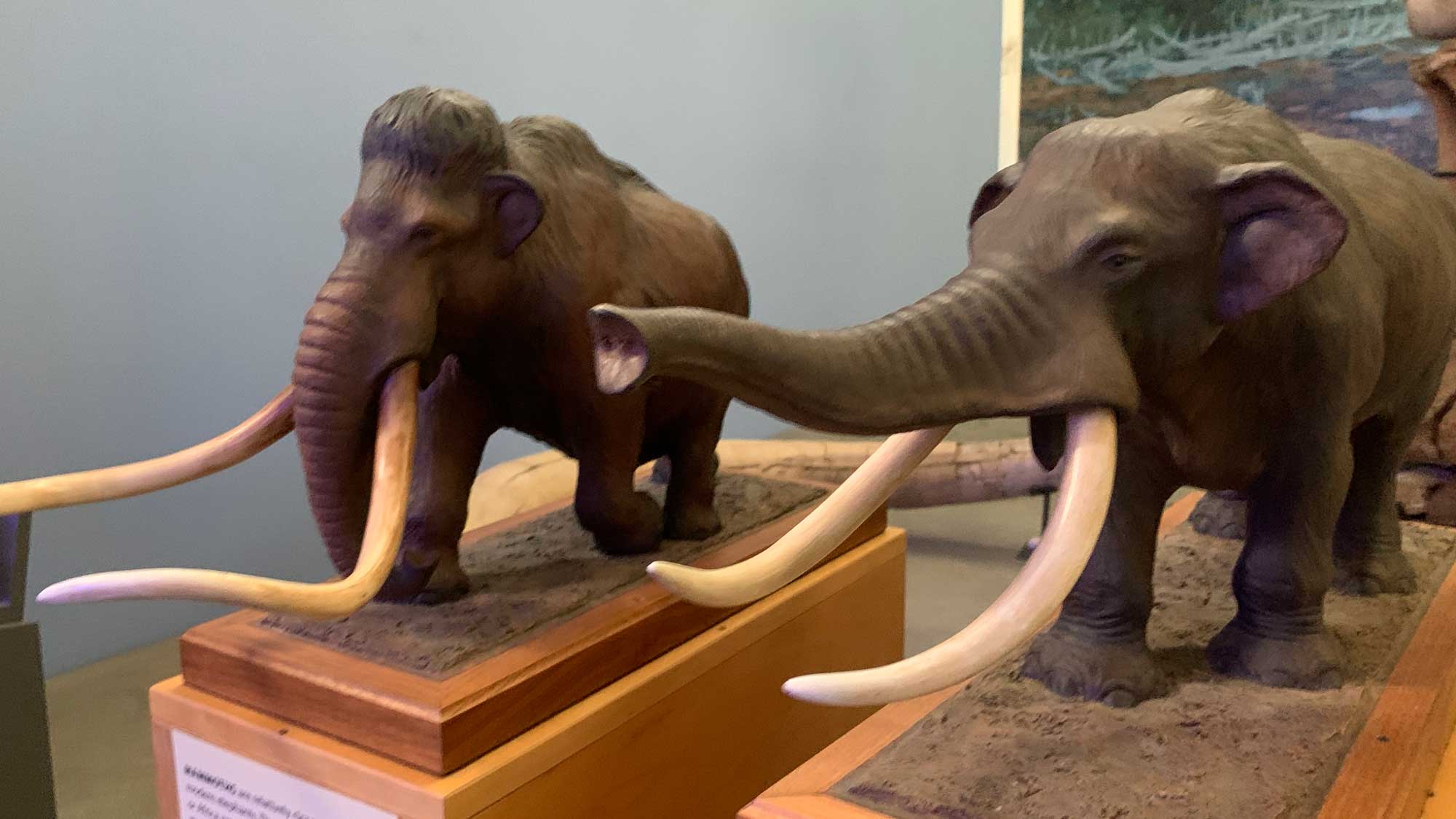What is a mastodon, anyway?
Like mammoths (on the left in the image above), mastodons were common during the last ice age, but the two elephant-like creatures are fairly distant relatives. The more-familiar mammoths were close cousins of modern elephants (a fact that is of interest to those considering doing a Jurassic Park on mammoths – you could also read this interesting post on the subject of ‘de-extinction’). However, the ancestors of mastodons diverged from the lineage that led to mammoths & elephants about 25 million years ago (mya). The teeth of the two groups suggest that they occupied different ecological niches, with mammoth (& elephant) teeth showing adaptations related to grinding their food, while the structure of mastodon teeth suggest that they cut off twigs & leaves.
Various species of mastodon were widely distributed across the northern hemisphere, but had never been recorded from Greenland. Until now, that is. A recent study used ancient environmental DNA (eDNA) technology to look at long-vanished ecosystems on Greenland, and a summary of the research reports that
Two-million-year-old DNA sequences — the oldest ever obtained — recovered from frozen soil suggest that the region was once home to mastodons and reindeer that roamed a forested ecosystem unlike any now found on Earth.
The research team used sediment samples from a deep deposit of frozen mud & sand that formed close to the ancient shoreline between 1.9 & 2.1 mya. This would have been incredibly painstaking research as they needed to be able to distinguish the ancient eDNA¹ from other, modern, contaminants. But the care paid off, and they found that the northern Greenland ecosystem of 2mya was
an open boreal forest ecosystem with mixed vegetation of poplar, birch and thuja trees, as well as a variety of Arctic and boreal shrubs and herbs, many of which had not previously been detected at the site from macrofossil and pollen records.
Many of the plants whose presence was shown by ancient eDNA were also known from the area via macrofossils and pollen.
What was more, the team found ancient eDNA evidence for the presence of a range of animals, including mastodons & reindeer. The presence of large herbivores like these is interesting because it suggests that the northern Greenland region must have had higher primary productivity 2 mya than was previously thought:
DNA from mastodon must imply a viable population of this large browsing megaherbivore, which would require a more productive boreal habitat than that inferred in earlier reconstructions based primarily on plant macrofossils.
As the authors of this fascinating paper say, their work shows “the power of ancient eDNA to add substantial detail to our knowledge” of ancient ecosystems and how they changed over time – which may also help our understanding of the impact of climate change on future ecosystems as well.
¹ The full research paper includes a proposed mechanism for the survival of eDNA sequences from so long ago, suggesting that DNA adsorbed to mineral surfaces would be protected to some degree from breakdown by enzymes.
References:
Callaway, E. Oldest-ever DNA shows mastodons roamed Greenland 2 million years ago. Nature 612, 384 (2022) https://doi.org/10.1038/d41586-022-04377-x
Kjær, K.H., Winther Pedersen, M., De Sanctis, B. et al. A 2-million-year-old ecosystem in Greenland uncovered by environmental DNA. Nature 612, 283–291 (2022). https://doi.org/10.1038/s41586-022-05453-y
